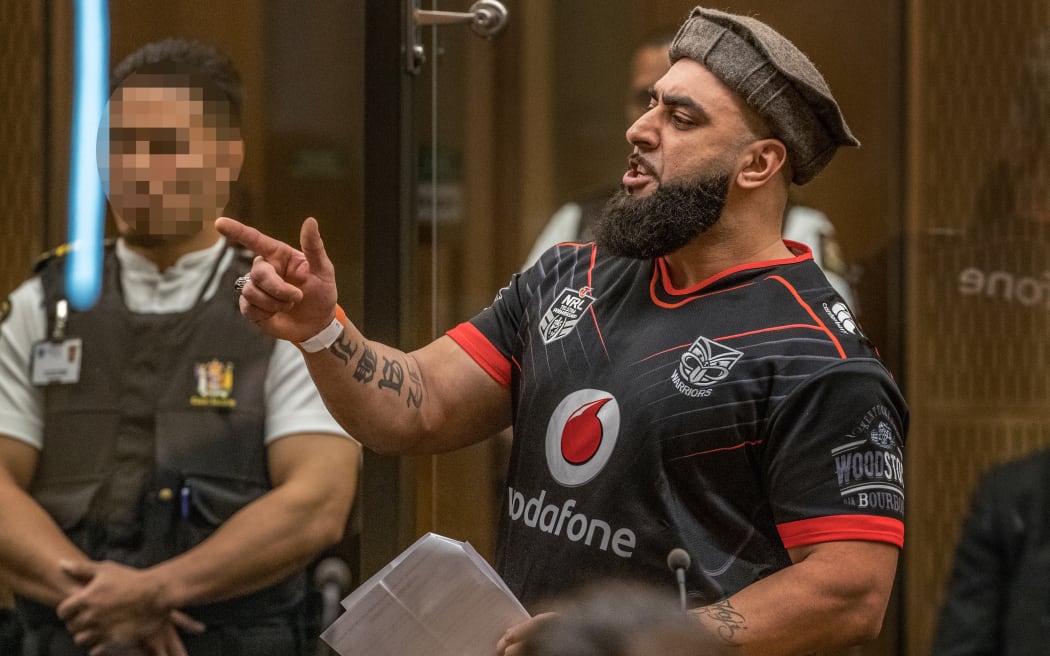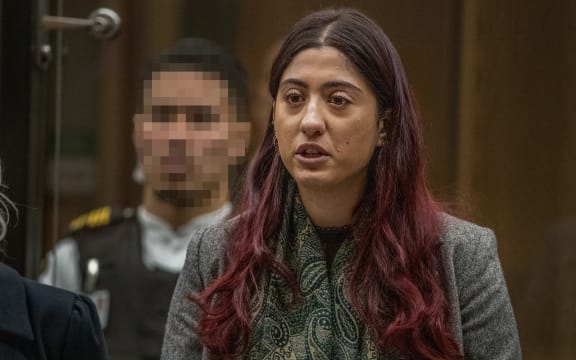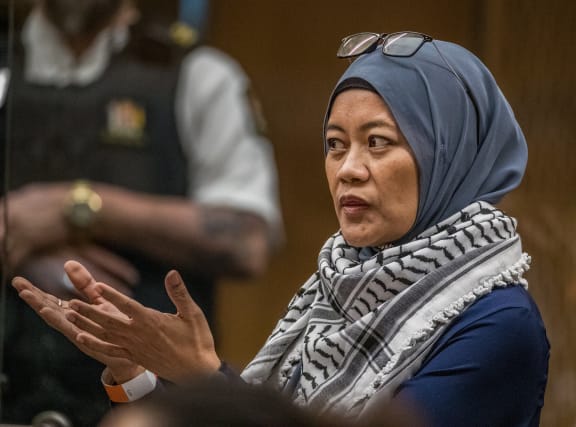Many feared this week's sentencing of the 15 March gunman would become a pulpit for him to spread white supremacist dogma. But instead, the spotlight was on the righteous anger, resilience, compassion, and ultimately love, of his living victims.

Photo: Stuff / Pool
As the court date in Christchurch approached, many people feared he would use his legal platform to preach hateful ideology.
It had happened before. The Norwegian mass killer Anders Breivek used his 2012 trial as a pulpit for white supremacist dogma.
At first, the Christchurch gunman seemed to have similar plans. He sent his manifesto to political leaders and livestreamed his massacre on Facebook for maximum exposure.
In his judgement handed down on Thursday, Justice Cameron Mander said the killer had planned “to be captured alive and to use [his] subsequent interactions with the police and the court process to advance [his] ideological cause.”
Media companies were wary of inadvertently cooperating in that agenda. The heads of TVNZ, RNZ, Stuff, MediaWorks, and NZME all signed up to reporting guidelines aimed at limiting their coverage of statements, or even hand gestures, seen as championing white supremacist ideals.
But worries persisted about what the gunman would say during sentencing, and they only grew more intense in July, when he fired his lawyers and opted to defend himself in court.
Though those concerns were justified, thankfully they didn’t turn out to be realised.
Throughout his four-day trial, the mosque gunman struck a mute, pathetic and at times almost peripheral figure.
The spotlight was fixed instead on his victims' living family, and the people who had survived his attack, as they spoke in often raw terms of the pain and loss his actions had inflicted.
Ahad Nabi, whose father Haji-Daoud Nabi was murdered at the Al Noor Mosque, expressed his anger.
“Coming back to this maggot, my 71-year-old dad would’ve broken you in half if you’d challenged him to a fight. But you are weak: a sheep with a wolf’s jacket on for only 10 minutes of your whole life,” he said.
A photo of Ahad Nabi giving the mosque gunman the fingers later went viral online.

Sara Qasem. PHOTO: JOHN KIRK-ANDERSON Photo: Stuff / Pool
Sara Qasem spoke about missing her murdered father Abdelfattah’s cooking, his laugh, and most of all, his voice.
“I want to hear him tell me more about the olive trees in Palestine. I want to hear his voice. I want to hear my dad’s voice. My baba’s voice.”
The last victim to address the court, Hamimah Tuyan, also turned to the domestic and seemingly mundane as she tried to put her loss into words.
“I miss my husband’s cooking. His lame dad jokes,” she said. “His light snores in the night. That look that can calm me down. He was my imam. My bodyguard. My entertainer. My problem solver. My comforter. My best friend.”
Those following the trial were struck by how the dignity and mana of the survivors stood in stark contrast to the man whose actions they were addressing.

Hamimah Tuyan. PHOTO: JOHN KIRK-ANDERSON Photo: Stuff / Pool
Stuff’s Charlie Mitchell said each word spoken by the killer’s victims had made him seem even more pitiful.
“It’s worth remembering the terrorist planned to plead not guilty so he could gleefully spread his ideals through the media. Instead, he has been rendered silent, pitiful, faceless; a husk further hollowed with every word spoken by his living victims.”
When the terrorist was sentenced to life in prison without parole, those living victims sat mostly silent for a time.
They eventually emerged from the courtroom into a crowd of supporters, who had congregated to clap and sing waiata.
RNZ reporter Conan Young’s voice cracked as he spoke to Jesse Mulligan from the gathering.
“They’ve started coming out now. A lot of the victims. Those injured. Those who’ve lost loved ones. It was just incredibly emotional scenes as they came out and put their hands in the air, and thanked everybody, yelled across the other side, and said we are one.”
Those scenes, and the testimonies of the victims' families, will likely be the enduring images from this week’s trial.
Rather than becoming a vehicle for white supremacist propaganda, it ended up amplifying the voices and stories of the people the March 15 gunman had tried to silence.
In the end, reporters didn’t have to deal with how to report responsibly on one man’s hatred.
Instead, they got to broadcast the righteous anger, resilience, compassion, and ultimately, love of a community.


